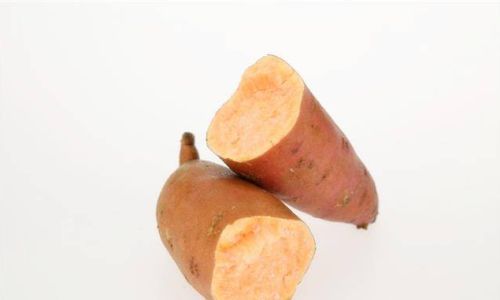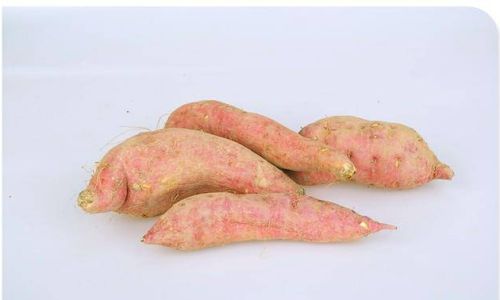Sweet potatoes, with their vibrant hues and earthy sweetness, have long been celebrated as a dietary staple in cultures worldwide. Rich in fiber, vitamins, and antioxidants, they are often hailed as a superfood. However, a question lingers among health-conscious individuals and culinary explorers: Can sweet potatoes be eaten raw? This article delves into the scientific, nutritional, and culinary dimensions of consuming sweet potatoes in their uncooked form, weighing the potential benefits against the risks.

The Nutritional Landscape of Sweet Potatoes
Sweet potatoes (Ipomoea batatas) are nutrient-dense root vegetables that offer a spectrum of health-promoting compounds. A medium-sized sweet potato (approximately 150 grams) provides roughly 130 calories, 30 grams of carbohydrates, 4 grams of fiber, and negligible fat. They are particularly renowned for their high beta-carotene content, which the body converts into vitamin A—a nutrient critical for eye health, immune function, and cellular growth. Additionally, sweet potatoes are a source of vitamin C, manganese, potassium, and various B vitamins.
When comparing raw and cooked sweet potatoes, nutritional differences emerge. Cooking methods like boiling, baking, or steaming can alter the bioavailability of certain nutrients. For instance, heat breaks down the plant’s cell walls, making beta-carotene more accessible for absorption. A 2018 study published in the Journal of Food Composition and Analysis found that baked sweet potatoes retained 85% of their beta-carotene content, while boiling resulted in slight losses due to leaching into water. Conversely, raw sweet potatoes may offer higher levels of vitamin C, which is heat-sensitive and can degrade during cooking. This trade-off underscores the importance of considering specific nutritional goals when deciding whether to consume sweet potatoes raw or cooked.
Digestibility and Anti-Nutrients: The Raw Challenge
One of the primary concerns surrounding raw sweet potato consumption is digestibility. Like many root vegetables, sweet potatoes contain starch—a complex carbohydrate that serves as an energy reserve for the plant. In their raw state, starch molecules are tightly packed, making them difficult for human digestive enzymes to break down. This can lead to gastrointestinal discomfort, including bloating, gas, and cramping, particularly in individuals with sensitive stomachs or irritable bowel syndrome (IBS).
Moreover, raw sweet potatoes harbor anti-nutritional factors—compounds that inhibit the absorption of certain minerals or enzymes. Trypsin inhibitors, for example, interfere with the digestion of proteins by blocking trypsin, an enzyme produced in the pancreas. A 2020 study in the Journal of Agricultural and Food Chemistry identified trypsin inhibitor activity in raw sweet potato extracts, though levels decreased significantly after cooking. Similarly, lectins, proteins that can bind to carbohydrates, are present in raw sweet potatoes and may contribute to digestive issues if consumed in large quantities. Cooking at high temperatures effectively denatures these proteins, rendering them harmless.
Oxalates, another group of anti-nutrients, are also found in sweet potatoes. While their levels are relatively low compared to spinach or beets, oxalates can bind to calcium and magnesium, potentially forming crystals that contribute to kidney stones in susceptible individuals. Cooking sweet potatoes reduces oxalate content by up to 50%, according to a 2019 report by the American Journal of Clinical Nutrition.

Raw Sweet Potatoes: Risks and Rewards
Despite these challenges, raw sweet potatoes do offer unique advantages. For instance, raw starch is classified as resistant starch, a type of carbohydrate that resists digestion in the small intestine and ferments in the large intestine. This fermentation process produces short-chain fatty acids (SCFAs), which nourish gut bacteria and may improve metabolic health. A 2021 review in Nutrients highlighted resistant starch’s role in enhancing insulin sensitivity and reducing inflammation. However, consuming large quantities of raw sweet potato to harness this benefit could exacerbate digestive distress, necessitating a balance between intake and tolerance.
From a culinary perspective, raw sweet potatoes add a refreshing crunch to salads, slaws, or spring rolls. Their natural sweetness pairs well with acidic dressings, herbs, and spices. Grated raw sweet potato can also be incorporated into vegan patties or mixed with grated carrots and apples for a nutrient-packed salad. Fermenting raw sweet potato, a traditional practice in some Asian cuisines, further enhances digestibility by breaking down anti-nutrients and increasing bioavailable nutrients.
Preparation Methods for Safe Raw Consumption
For those eager to experiment with raw sweet potatoes, proper preparation is key to mitigating risks:
-
Grating or Shredding: Finely grating raw sweet potato increases surface area, making it easier for digestive enzymes to access starch molecules. Soaking grated sweet potato in lemon juice or vinegar can also help neutralize anti-nutrients like lectins.
-
Fermentation: Fermenting raw sweet potato with salt and water (a process akin to making sauerkraut) introduces beneficial bacteria that pre-digest anti-nutrients and starches. A 2022 study in International Journal of Food Microbiology demonstrated that lacto-fermentation reduced trypsin inhibitor activity by 70% in sweet potato samples.

-
Blending into Smoothies: Pairing raw sweet potato with high-enzyme foods like pineapple or ginger can aid digestion. Adding a source of healthy fat, such as avocado or coconut milk, may also enhance nutrient absorption.
-
Thin Slicing: Ultra-thin slices (e.g., using a mandoline) can be marinated in acidic liquids to soften texture and reduce anti-nutrient levels.
Expert Opinions and Cultural Perspectives
Nutritionists generally advocate for moderation when consuming raw sweet potatoes. Dr. Emily Wilson, a registered dietitian specializing in plant-based diets, notes, “While raw sweet potatoes can be a creative addition to meals, they’re not a daily staple for most people. Cooking remains the gold standard for maximizing nutrient absorption and minimizing digestive discomfort.”
Culturally, raw sweet potato consumption is uncommon in Western diets but appears in certain Asian and Pacific Islander cuisines. In Japan, for example, thinly sliced raw sweet potato is sometimes used in sunomono (vinegared salads). Similarly, Hawaiian poi—a paste made from fermented taro root—inspires parallel preparation methods for sweet potato. However, these traditions often involve fermentation or acidulation, which align with modern food safety practices.
The Verdict: To Cook or Not to Cook?
The decision to eat sweet potatoes raw hinges on individual health goals, digestive capacity, and culinary preferences. For those seeking maximum beta-carotene absorption and ease of digestion, cooking is advisable. However, raw sweet potatoes can offer a unique texture and resistant starch benefits when prepared thoughtfully.

Key takeaways:
- Moderation is key: Limit raw intake to small portions, especially if prone to bloating.
- Preparation matters: Use grating, fermenting, or acidic marinades to enhance digestibility.
- Listen to your body: Monitor how raw sweet potatoes affect your digestion and adjust accordingly.
Conclusion
Sweet potatoes, whether roasted to caramelized perfection or shredded raw into a vibrant salad, are a testament to nature’s culinary versatility. While cooking remains the safest and most nutrient-efficient method for most individuals, raw consumption is feasible with mindful preparation. As research continues to unravel the complexities of plant-based diets, one thing is clear: the humble sweet potato, in any form, is a worthy addition to a balanced, health-conscious plate.
In the end, the question isn’t whether sweet potatoes can be eaten raw—but rather, how best to savor their gifts while honoring the delicate balance between nutrition, flavor, and digestive harmony.





0 comments